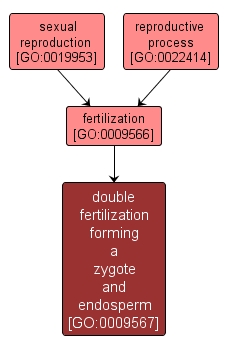| Desc: |
Fertilization where one of the two sperm nuclei from the pollen tube fuses with the egg nucleus to form a 2n zygote, and the other fuses with the two polar nuclei to form the 3n primary endosperm nucleus and then develops into the endosperm. The ploidy level of the 2n zygote and 3n primary endosperm nucleus is determined by the ploidy level of the parents involved. An example of this component is found in Arabidopsis thaliana. |














